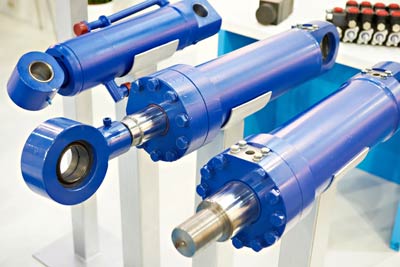Comparing LVDT Technology with Alternatives for Hydraulic Actuation
Written by transtek_admin on 10/15/2024

Position sensing plays a crucial role in ensuring precise control and reliable operation for hydraulic actuation. While Linear Variable Differential Transformers (LVDTs) are the go-to sensing solution, several competing technologies offer various advantages and trade-offs. Today we’ll explore the four main position sensing technologies used in hydraulic actuators: LVDTs, magnetostrictive sensors, Hall effect sensors, and resistive sensors.
LVDTs: The Time-Tested Solution
LVDTs remain one of the most popular choices particularly in aerospace and other mission- and safety-critical applications. This widespread adoption stems from several key advantages LVDTs offer including:
- Superior Ruggedness – LVDTs are built to withstand harsh conditions, making them ideal for demanding applications.
- High Temperature and Pressure Tolerance – they excel in extreme environments where other sensors might fail, especially when specifically designed as ruggedized LVTDs for these uses.
- Cost-Effective – despite their robust construction, LVDTs generally offer lower than average costs when compared to some other solutions.
- Proven Reliability – their long history in demanding applications demonstrates their repeatability and safety.
However, LVDTs do have some limitations. They typically require more space compared to other methods. Some newer, but less robust, technologies may be more cost-effective in certain applications.
Magnetostrictive Sensors: When Higher Performance is Required
Magnetostrictive sensors present an attractive alternative for applications where space is at a premium and high resolution is required. Advantages include:
- Compact Design – magnetostrictive sensors require less space than LVDTs.
- Improved Resolution – their design allows for higher fidelity when compared to other options
Magnetostrictive sensors do have a few drawbacks when compared to LVDTs. Although prices have decreased recently, they still come with relatively higher price tags. They also have lower temperature and pressure tolerances compared to LVDTs, which limits their ability to be used for many applications. Their construction is also less rugged. All of this means magnetorestrictive sensors are best suited for industrial applications with moderate environmental demands.
Hall Effect Sensors: When Space is Limited
Hall effect sensors have gained popularity, especially in retrofitting applications, due to their a few positive characteristics including:
- Space Saving – hall effect sensors have a smaller footprint that other options
- Reasonably Priced – due to their relative simplicity, these sensors tend to cost less than LVDTs
- Variable resolution capabilities – offers more flexibility to match application needs
Hall effect sensors have a few drawbacks as well. Similar to magnetostrictive sensors, they have lower temperature and pressure ratings compared to LVDTs. Their construction is moderately rugged, so the will not hold up for more demanding applications.
Resistive Sensors: When Budget is the Critical Factor
Resistive sensors represent the most economical option, though with some significant trade-offs. Benefits include:
- Simple Implementation – resistive sensors use the basic electrical principle of voltage division to work, and require minimal supporting electronics
- Lowest Cost – due to their extremely simple design, resistive sensors come with the lowest cost
- Moderate Space Requirements – resistive sensors typically take less space than LVDTs
This simplicity of resistive sensors contributes to their limitations such as durability and precision. They provide lower resolution, but adequate enough for long-stroke actuators. Finally, they have limited durability when compared to LVDTs.
Making the Right Choice
While LVDTs continue to dominate in high-reliability applications, alternative technologies provide engineers with options to meet specific requirements. Required resolution, available space and the need for durability are key considerations. Lately, cost has become a bigger consideration. But we caution you to be careful not to sacrifice functionality and durability, especially for more demanding uses, to save money. Specifying the wrong will likely cost much more in the long run.

